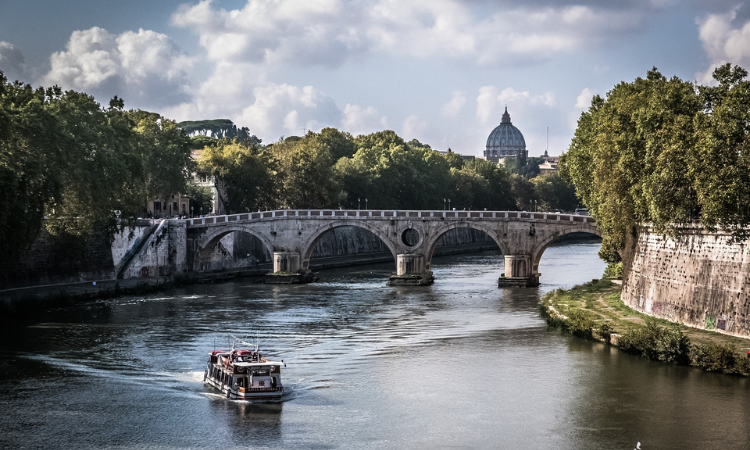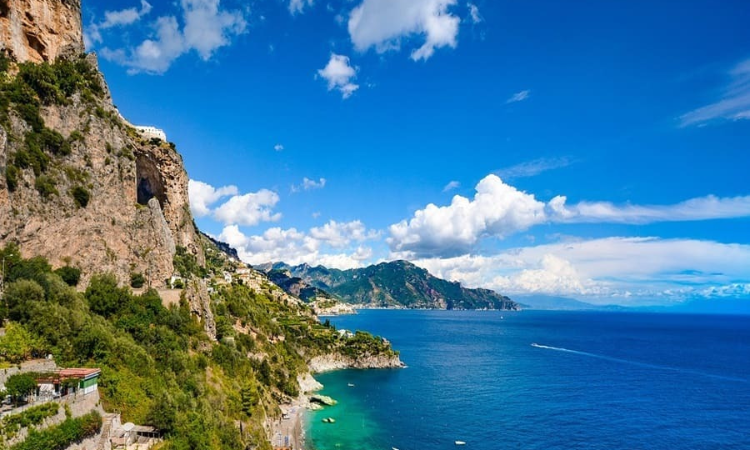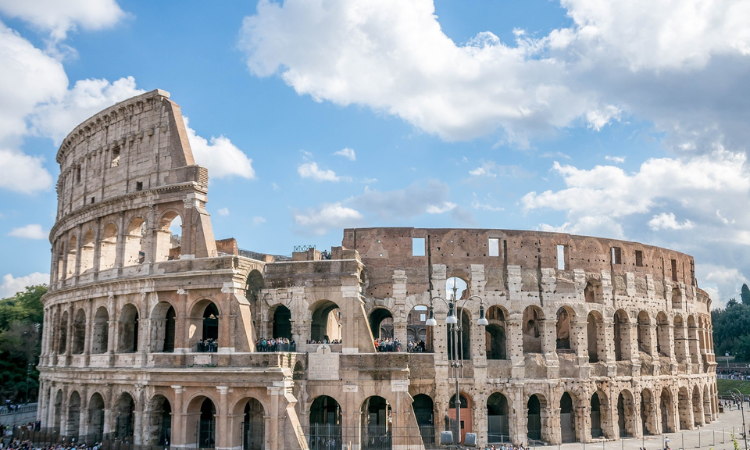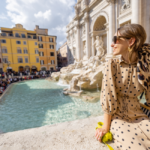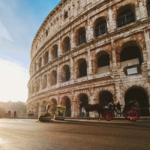How many days in Rome: Key Takeaways
Wondering how many days in Rome are enough? Rome, the Italian capital and a city rich in history and culture, can be experienced in different ways depending on the length of your stay and interests. For a focused visit covering major attractions, 3-4 days are typically sufficient. However, if you wish to explore the city more leisurely, including some nearby destinations, choosing from 5-7 Italy tours days would allow for a more immersive experience. For travelers on a multi-city tour, allocating at least four days to Rome is recommended, with an ideal scenario of three full days dedicated to exploring the city alongside arrival and departure days. Those who plan to visit Rome exclusively could consider a seven-day itinerary, offering the opportunity to delve deeper into the city’s culture, history, cuisine, and hidden gems.
Understanding Rome’s Rich History and Attractions
The Eternal City’s Heritage
Rome, often revered as the “Eternal City,” serves as a living museum showcasing the intricate weave of human history. Its role in shaping world history is vast and complex, deeply rooted in the stories of “Ancient Rome,” the reach and influence of the “Roman Empire,” and the detailed accounts of ancient Roman life.
The legacy of Ancient Rome forms the cornerstone of Western civilization. In its days as a republic and later as an empire, Rome established pioneering standards in law, governance, engineering, and the arts, many of which still resonate in today’s world. At its peak, the Roman Empire exerted control over extensive regions of Europe, North Africa, and the Middle East, becoming a melting pot for cultural and economic interactions. This era witnessed significant achievements in architecture, literature, and philosophy, with many of these contributions preserved and passed down through generations.
Roman history also presents a tapestry of innovation and paradox, marked by advanced governance alongside ruthless conquests, and a blend of high art and gladiatorial spectacle. The chronicles of Rome embody the ascent and decline of one of the most pivotal civilizations in history, providing a deep understanding of human nature and the patterns of societal growth and decay.
Must-Visit Historical Sites
Rome is home to a plethora of historic sites that transcend the role of typical tourist destinations, serving instead as portals to an ancient world. The Colosseum stands as a significant testament to Roman engineering, a former arena for gladiatorial combat now emblematic of Rome’s lasting heritage. The Roman Forum, at the heart of the city’s attractions, functioned as the epicenter of Roman public life, its remnants revealing facets of the political, religious, and social dynamics of ancient Rome. Within Rome lies Vatican City, a bastion of religious and artistic wealth, distinguished by the iconic St. Peter’s Basilica. Complementing these historic marvels, Rome’s allure is further amplified by notable landmarks like the Trevi Fountain, the Spanish Steps, and Piazza Navona, each adding to the city’s unique fusion of historical depth and modern vibrancy.
Determining Your Rome Itinerary
How many days in Rome would be enough? What should your itinerary have?
Crafting the ideal Rome itinerary hinges on a harmonious blend of personal interests and practical considerations. Rome, with its rich tapestry of art, history, and culinary delights, offers a plethora of experiences that cater to diverse interests. Your itinerary should reflect your unique preferences, ensuring an enriching and memorable visit to the Eternal City.
Tailoring to Your Interests
When planning a trip to Rome, consider how your personal interests, be it art, history, or food, will shape the duration and content of your stay. A well-crafted “Rome itinerary” should reflect these interests, allowing for a more personalized and fulfilling experience. Here are a few more attractions depending on your interests.
- Art Lover: For those passionate about art, Rome is a treasure trove of Renaissance and Baroque masterpieces. Allocate additional time for in-depth exploration of galleries and museums. You may want to spend more days delving into the artistic heritage of the city, from the Vatican Museums to the lesser-known art collections.
- History Buffs: If history is your calling, Rome’s ancient sites and historical narratives will demand more of your time. Visits to the Colosseum, Roman Forum, and Palatine Hill, among others, can be time-intensive but incredibly rewarding. Historical explorations often require slower pacing to fully absorb the context and significance of each site.
- Culinary Enthusiasts: Food lovers might want to intersperse sightseeing with culinary experiences. Rome’s gastronomic landscape, from fine dining to street food, warrants ample time for tasting and enjoyment. Consider scheduling extra time for leisurely meals, cooking classes, or food tours.
Essential Duration for Major Attractions
Are you confused about what things to see in Rome? Determining the essential duration to explore Rome’s major attractions is crucial for a well-balanced itinerary.
Allocate at least half a day to explore these iconic sites. Their historical significance and scale necessitate several hours for a comprehensive visit.
To experience the Vatican Museums and Sistine Chapel adequately, allocate at least half a day, as they offer a vast array of art and history. St. Peter’s Basilica and Vatican City, separate from the museums, require another half-day for thorough exploration, factoring in security checks and possible lines. Piazza Navona, Trevi Fountain, and Spanish Steps can be enjoyed in a few hours, ideally with a walking tour of Rome’s central areas. For a genuine feel of Rome, including neighborhoods like Trastevere, set aside a few hours to a full day, particularly for those keen on the city’s culinary and nightlife offerings.
Experiencing Rome Beyond the Main Attractions
Visiting Rome isn’t just about ticking off the major sights; it’s also about immersing oneself in the city’s heart, discovering hidden gems, and engaging in activities that bring you closer to the local culture. This section of your itinerary is dedicated to exploring the lesser-known yet equally captivating facets of Rome, providing a more holistic and enriching experience.
Exploring Lesser-Known Gems
Rome is layered with history and culture, with every corner whispering stories of the past. Moving away from the well-trodden tourist paths, one can discover the city’s hidden gems that offer a unique perspective of Roman life.
- The Jewish Ghetto: This historic area, with its narrow lanes and distinctive architecture, offers a glimpse into the rich cultural tapestry of Rome. The Jewish Ghetto, one of the oldest in the world, is not only significant historically but also for its vibrant present-day community and delicious kosher cuisine.
- Trastevere: Known for its bohemian vibe, Trastevere is a charming neighborhood with ivy-clad buildings, small boutiques, and artisanal shops. Its narrow streets and hidden piazzas are perfect for leisurely exploration, offering a respite from the bustling city center.
- Campo de Fiori: This lively square is famous for its daily markets where locals shop for fresh produce. In the evenings, Campo de’ Fiori transforms into a social hub with numerous cafes and bars, offering a taste of the local nightlife.
Engaging in Local Experiences
To fully immerse in Rome, one should engage in the everyday life and customs of its people, focusing on Italian food and local culture. Food tours across Rome’s varied neighborhoods are essential, offering tastes of local delicacies like supplì, Roman pizza, and gelato, and providing insights into Roman culinary traditions. Cooking classes are another way to delve into Italian culture, learning traditional recipes and the art of communal cooking from local chefs. Visiting bustling local markets such as Mercato Trionfale or Mercato Testaccio allows for an authentic glimpse into Roman daily life, with an array of fresh produce and lively vendor interactions. Evening strolls through Rome’s piazzas and along the Tiber River offer a chance to observe and join the social heart of the city. These unique experiences add depth to a Rome visit, allowing for a deeper, more personal connection with the city beyond its famous landmarks, uncovering the true essence of Rome in its hidden corners and the daily routines of its people.
Incorporating these less conventional experiences into your Rome itinerary enriches your trip, offering a more authentic and personal connection to the city. Beyond the grandeur of its famous landmarks, Rome’s true essence lies in its hidden corners and in the daily lives of its residents.
Balancing Sightseeing with Leisure
Exploring Rome is not just about sightseeing; it’s also about embracing the Italian ethos of ‘la dolce vita’ or ‘the sweet life.’ Irrespective of how many days to spend in Rome, make sure you have a blend of both active and relaxing days. This section of your Rome itinerary emphasizes the importance of balancing rigorous sightseeing schedules with moments of leisure, allowing for a more relaxed and fulfilling experience.
The Importance of a Leisurely Pace
In the rush to see all that Rome offers, it’s easy to fall into the trap of over-scheduling. However, adopting a “leisurely pace” is key to truly enjoying Rome. This approach does not mean seeing less; rather, it allows for a deeper and more enjoyable experience of each site.
- Absorbing the Atmosphere: Rome is a city where the ambiance is as important as the sights themselves. A leisurely approach gives you the time to soak in the atmosphere, whether it’s sipping a cappuccino in a quaint piazza or strolling through the cobbled streets without a strict agenda.
- Cultural Immersion: Taking things slowly allows for spontaneous interactions and cultural immersion. You might find yourself engaging in a friendly chat with a local, discovering a street artist, or stumbling upon a hidden gem that’s not in the guidebooks.
- Reducing Travel Stress: A packed itinerary can become stressful, detracting from the joy of travel. Allowing for leisure time helps in reducing fatigue and keeping the experience enjoyable and memorable.
Day Trips and Nearby Excursions
While Rome itself is brimming with attractions, part of its charm lies in its proximity to other stunning locations in Italy, many of which are perfect for “day trips” and can be reached by a “short train ride.”
- Tivoli: Just a short train ride from Rome, Tivoli is home to the beautiful Villa d’Este, famous for its Renaissance architecture and terraced gardens, and the ancient ruins of Hadrian’s Villa.
- Ostia Antica: Often overlooked, Ostia Antica offers a glimpse into the life of an ancient Roman port town. Its well-preserved ruins are less crowded than those in central Rome, making for a peaceful day excursion.
- Amalfi Coast: For a longer day trip, the Amalfi Coast offers breathtaking scenery. While a bit farther away, it’s possible to visit towns like Positano or Amalfi for a day, especially if using high-speed train services to Naples and then transferring to a bus or ferry.
- Orvieto: This charming medieval town in Umbria is known for its stunning cathedral and fascinating underground tunnels. A short train ride from Rome, Orvieto sits atop a cliff and offers spectacular views of the Italian countryside.
Incorporating these day trips into your itinerary can provide a refreshing contrast to the bustling city life of Rome. They offer an opportunity to explore the diverse landscapes and cultures within Italy, making your trip even more enriching. Remember, the goal is to create a balanced itinerary that combines the exploration of Rome’s rich history and culture with the relaxation and rejuvenation that comes from leisurely travel.
Customizing Your Trip Duration
Deciding “how many days to spend in Rome” can be a challenge given the city’s abundance of attractions. The duration of your stay should align with your interests, the pace at which you prefer to travel, and the depth of experience you wish to gain. Below are sample itineraries for 3-day, 5-day, and 7-day stays, offering a structured yet flexible approach to exploring Rome.
Short, Medium, and Long Stays
1. 3-Day Stay (Short):
- Day 1: Explore the historic core of Rome. Visit the Colosseum, Roman Forum, and Palatine Hill. In the afternoon, stroll through the streets and discover the Pantheon and Piazza Navona. End the day at the Trevi Fountain.
- Day 2: Dedicate this day to Vatican City. Visit the Vatican Museums, the Sistine Chapel, and St. Peter’s Basilica. Spend the evening exploring the Trastevere neighborhood.
- Day 3: Begin with the Spanish Steps and then walk to the Villa Borghese Gardens for a leisurely morning. In the afternoon, visit the Campo de Fiori and explore the Jewish Ghetto.
2. 5-Day Stay (Medium):
- Follow the 3-day itinerary for the first three days.
- Day 4: Visit other historical sites like the Baths of Caracalla or the Capitoline Museums. Spend the afternoon in the Monti district or the Appian Way for a blend of history and local life.
- Day 5: Take a day trip to a nearby town like Ostia Antica, Tivoli, or Orvieto.
3. 7-Day Stay (Long):
- Follow the 5-day itinerary for the first five days.
- Day 6: Dedicate this day to exploring lesser-known neighborhoods like Testaccio or the Pigneto district, known for their vibrant food scenes and street art.
- Day 7: Enjoy a leisurely day; revisit your favorite spots or explore new ones. Consider visiting the Aventine Hill for its beautiful churches and the Orange Garden (Giardino degli Aranci) for stunning views.
Making the Most of Your Time
Efficiently navigating Rome is key to a fulfilling experience, especially given the city’s vastness and the richness of its offerings.
- Public Transportation: Rome’s public transportation system, comprising buses, trams, and metro, is a cost-effective way to travel. Familiarize yourself with the metro lines, which are convenient for reaching major attractions. Buses and trams offer wider coverage and are useful for reaching areas not served by the metro. Exploring Italy by rail is also a wonderful idea!
- Walking Distance: Many of Rome’s attractions are within walking distance of each other, particularly in the city center. Walking not only gives you a closer look at the city’s charm but also saves time that might be spent navigating the public transport system.
- Roma Pass: Consider purchasing the Roma Pass, which offers free and discounted entry to various attractions and unlimited public transportation.
- Avoiding Crowds: Start early to beat the crowds, especially at popular sites like the Vatican Museums and the Colosseum. Also, consider visiting some attractions later in the day when they are less crowded.
- Mobile Apps and Maps: Utilize travel apps for real-time public transport updates and city maps. These tools can help you plan your journeys more efficiently and even discover hidden gems along the way.
By tailoring your Rome itinerary based on the duration of your stay and utilizing efficient travel methods within the city, you can create a fulfilling and memorable trip that balances the exploration of Rome’s rich historical and cultural tapestry with moments of leisure and relaxation.
In summarizing our journey through planning the ideal visit to Rome, it’s essential to revisit the factors that most significantly influence the duration of a trip to this timeless city. Ultimately, the question of “How many days do you need in Rome” is not one with a universal answer, but rather, it is deeply personal and varies depending on individual preferences and interests.
- Interests and Preferences: Your personal interests are the primary guide in determining how long to stay in Rome. Art enthusiasts, history buffs, food lovers, and those fascinated by religious landmarks will all find different aspects of Rome to explore, influencing the length of their stay.
- Major Attractions vs. Leisurely Exploration: The balance between visiting major attractions like the Colosseum, Vatican City, and Roman Forum, and enjoying leisurely activities such as strolling through Trastevere, relaxing in the Villa Borghese gardens, or savoring gelato near the Trevi Fountain, will also dictate the duration of your trip.
- Day Trips and Surrounding Areas: Consideration for nearby attractions outside of Rome, like the Amalfi Coast, Tivoli, or Ostia Antica, can extend your stay as these excursions offer varied experiences and a broader understanding of Italian culture and history.
- Pace of Travel: Your preferred pace of travel is crucial. Some travelers might prefer a packed itinerary to cover all the sights, while others may opt for a more relaxed pace, allowing for spontaneous discoveries and a deeper immersion in the local culture.
- Revisits and Seasonal Variations: The desire to revisit certain sites or experience Rome in different seasons can also influence the length of your stay. Rome offers diverse experiences throughout the year, from vibrant summer days to the quieter, cooler winter months.
Still thinking about how many days in Rome would be ideal?
The ideal length of a stay when visiting Rome is a reflection of your personal travel style, interests, and the experiences you wish to gain from the Eternal City. Whether it’s a short but sweet 3-day visit focused on the highlights, a 5-day exploration including surrounding areas, or a leisurely 7-day deep dive into the city’s life and culture, Rome promises an unforgettable experience tailored to your desires. Remember, the essence of travel lies in how the journey resonates with you personally, not in the number of days spent. So, in answering “How many days do you need in Rome,” look inward to your passions and outward to the endless possibilities Rome offers.
Want to plan your dream trip to Rome? Check out our Italy tours, and reach out to our experts today. They’ll be happy to help!
FAQ Section: Planning Your Rome Visit
- What are the must-see attractions in Rome?
- Rome is home to iconic landmarks such as the Colosseum, Roman Forum, Vatican City, St. Peter’s Basilica, and the Trevi Fountain. Each of these sites offers a unique glimpse into the city’s rich history and culture.
- Is a guided tour in Rome worth it?
- Yes, guided tours can provide deeper insights into the history and significance of Rome’s landmarks. They are especially beneficial for first-time visitors and those interested in learning about the city’s ancient Roman history and art.
- Can I explore Rome on foot, or do I need public transportation?
- Rome’s historic center is compact and walkable. However, for visiting sites that are further apart, such as the Vatican City, using public transportation or a taxi is recommended.
- What are some lesser-known attractions in Rome worth visiting?
- Beyond the famous landmarks, Rome has many hidden gems like the Jewish Ghetto, the Appian Way, and the Baths of Caracalla. These lesser-visited sites offer a quieter, yet equally enriching experience.
- Are there good day-trip options from Rome?
- Yes, Rome is well-positioned for day trips. Popular destinations include Pompeii, Tivoli’s Villa d’Este, and the picturesque towns of the Amalfi Coast.
- What should I know about Rome’s food culture?
- Rome is renowned for its cuisine. Be sure to try food tour of local specialties like carbonara, supplì (fried rice balls), and gelato. Food tours are a great way to explore the culinary landscape.
- How can I experience Rome’s local culture?
- To immerse yourself in local culture, spend time in Rome’s piazzas, attend a cooking class, or simply enjoy an espresso at a traditional café. Engaging with locals and exploring off-the-beaten-path neighborhoods can also enrich your experience.
- What tips do you have for first-time visitors to Rome?
- Plan ahead, especially for visiting major attractions. Wear comfortable shoes for walking, stay hydrated, and be mindful of your belongings in crowded areas. Also, learning a few basic Italian phrases can enhance your interactions with locals.
 Toll Free (USA & Canada) +1 866 978 2997
Toll Free (USA & Canada) +1 866 978 2997




